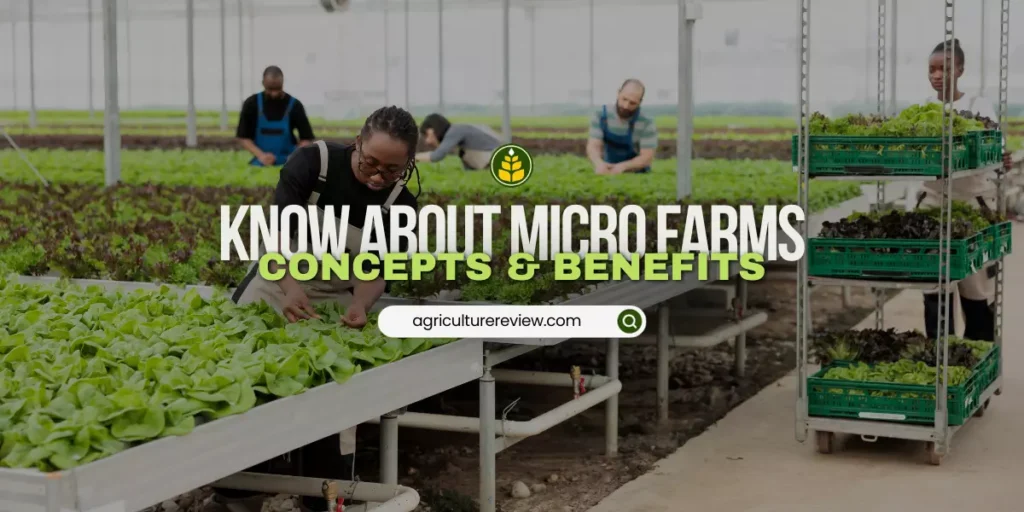Agricultural land is degrading gradually, according to a report from the United Nations Convention to Combat Desertification, 1.6 and 3.3 million hectares of hectares of agricultural land could be lost by 2030 due to urbanisation. Hence, a micro farm could be our potential solution to combat global hunger in the future.
However, most people often think that micro farms are related to the production of micro-greens. But, that’s not quite true. The concept of micro farming is more related to the efficient and sustainable farming system to maximize productivity in a small area of farmland.
What Is A Micro Farm?

A micro farm is a small urban or suburban farmland where farmers practice sustainable and efficient farming practices such as crop rotation, multiple cropping, drip irrigation, fertigation, companion planting, vertical farming etc. to increase efficiency, crop yield and reduce farm waste.
In a micro farm, farmers usually cultivate micro-greens, leafy vegetables, cauliflowers, lettuce, cabbage, zucchini, cucumbers, basil, herbs, etc. usually under controlled environmental conditions. Moreover, they also maintain quality parameters of their produce to get maximum returns in the market.
A micro farm can also have animal husbandry units, which farmers use to reuse animal husbandry waste to fertilize field crops and in return get feed for their animals from crop residues. It helps to reduce external costs and increase the efficiency of the micro farm.
What Is Micro Farming?
Micro farming is an urban to suburban, small-scale, highly efficient and sustainable farming practice that is usually done according to the market trends to get high returns. Crops are selected based on their selling price and yield in a smaller area.
The leading micro farming companies in the world are AeroFarms, Freight Farms, Infarm, Bowery Farming, Babylon Micro Farms, etc. In 2022, the total revenue of AeroFarms was estimated at around USD 22.0 Million.
Benefits Of Micro farming
- Productivity: Farmers practicing micro farming system uses effective strategies such as vertical farming, drip irrigation, fertigation, controlled environment, etc. which increases the productivity of the micro-farm.
- Sustainability: In this farming system, less amount of agrochemicals are used and sustainable practices such as crop rotation, multiple cropping, farm waste reuse, Integrated Pest Management, etc. are incorporated which makes it a sustainable farming system. It is good for maintaining soil health.
- Profitability: As this farming system requires less amount of external inputs and is focused on cultivating crops that are in higher demand in the market, that is why it is profitable.
- Optimum Yield: Due to the application of adequate amounts of fertilizers, a controlled environment, a weed-free environment, Integrated Pest Management, etc. crop health improves which results in optimum yield.
- Labor Extensive: Micro farming is labor extensive, as this farming system is practiced in a smaller area, therefore less labor is required to carry out the necessary farming activities such as sowing, transplanting, harvesting, etc.
If you have any queries, ideas or suggestions, then please comment below. You can also connect with Agriculture Review on Facebook, Instagram, Koo and WhatsApp Messenger.





